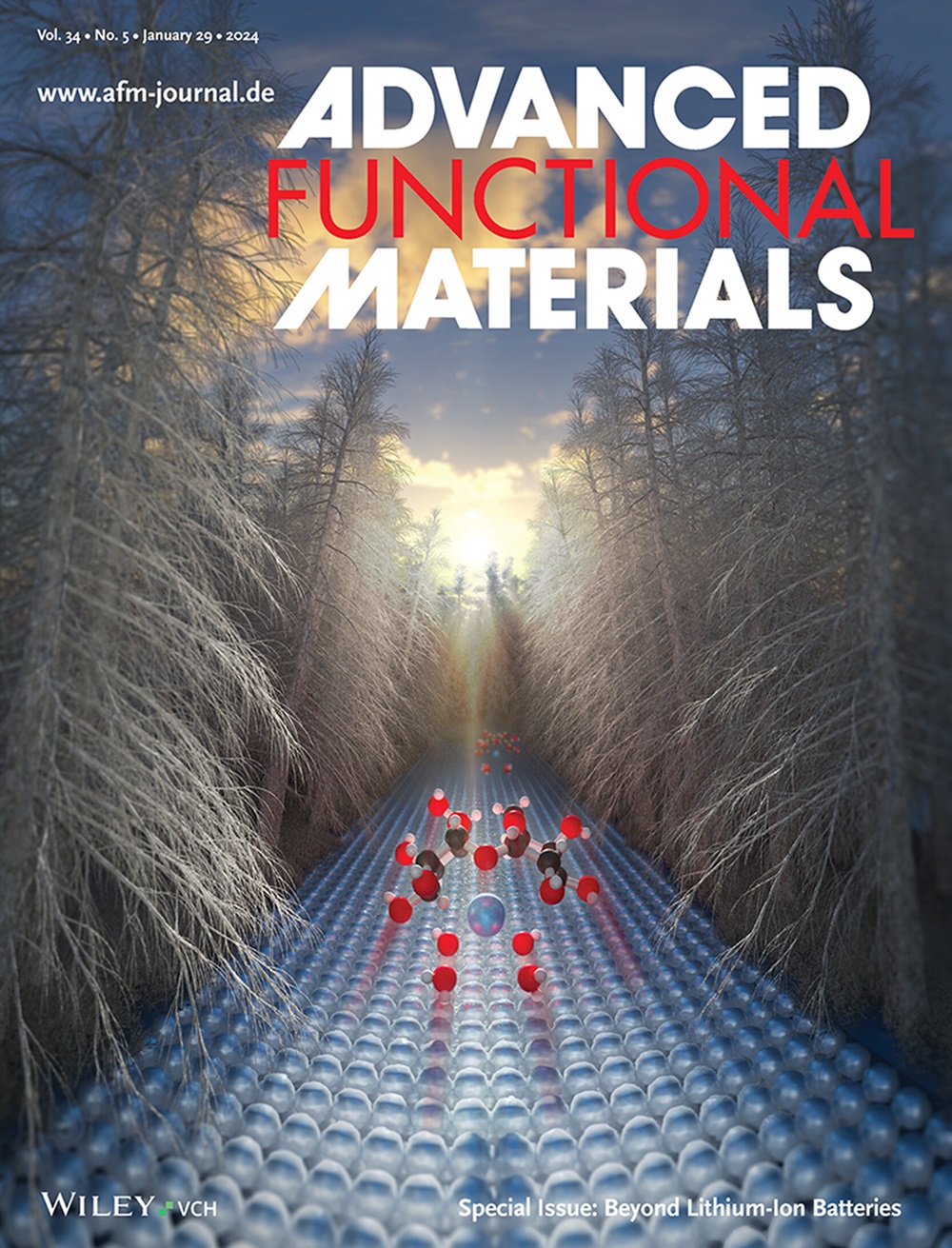Crystal Growth Promotion Enables High-Performance Te0.7Se0.3 Thin-Film Shortwave Infrared Photodetector for Multispectral Imaging Applications
IF 18.5
1区 材料科学
Q1 CHEMISTRY, MULTIDISCIPLINARY
引用次数: 0
Abstract
Tellurium-selenium (TexSe1-x) alloy compound is considered as an excellent light absorber layer for thin-film photodetector applications, owing to its suitable bandgap and excellent optoelectronic performance. Recently, the research on TexSe1-x photodetectors has achieved considerable progress, especially under electron and/or hole transport layer engineering to improve the device responsivity. However, the intrinsic growth mechanism of TexSe1-x thin film still needs investigation. In this work, based on the analysis of crystal growth thermodynamics and kinetics, Te0.7Se0.3 light absorber with optimal (100) growth orientation can be achieved through thermal evaporation of pre-alloyed Te0.7Se0.3 powder and atmosphere-assisted slow thermal annealing of Te0.7Se0.3 thin film. Thanks to the optimized Te0.7Se0.3 light absorber and Te0.7Se0.3/ZnO heterojunction interface, the champion self-powered thin-film photodetector possesses a wide spectral response range of 300–1600 nm, minimized dark current density of 3.1 × 10−5 mA cm−2, accompanied with satisfactory responsivity of 0.06 A W−1 and detectivity of 5.9 × 109 Jones at 1300 nm, and linear dynamic range exceeding 101 dB. Interestingly, an imaging system based on this photodetector can achieve high-precision color imaging and multispectral imaging from visible light to short wave infrared light, highlighting the intriguing application potential of Te0.7Se0.3 photodetectors.

求助全文
约1分钟内获得全文
求助全文
来源期刊

Advanced Functional Materials
工程技术-材料科学:综合
CiteScore
29.50
自引率
4.20%
发文量
2086
审稿时长
2.1 months
期刊介绍:
Firmly established as a top-tier materials science journal, Advanced Functional Materials reports breakthrough research in all aspects of materials science, including nanotechnology, chemistry, physics, and biology every week.
Advanced Functional Materials is known for its rapid and fair peer review, quality content, and high impact, making it the first choice of the international materials science community.
 求助内容:
求助内容: 应助结果提醒方式:
应助结果提醒方式:


